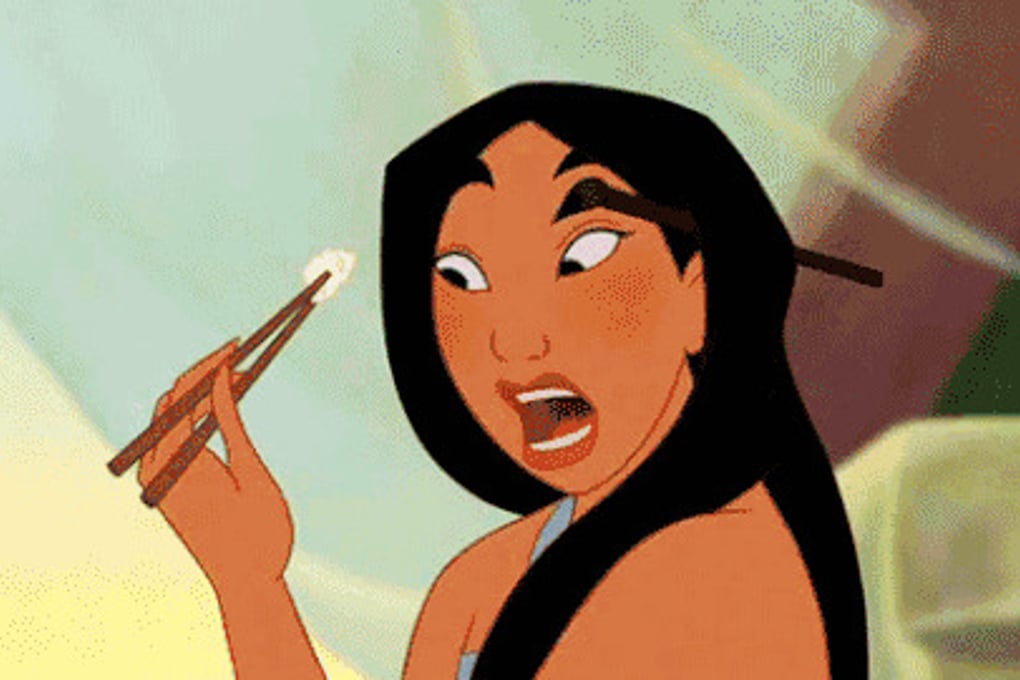I’ve always wondered what the Disney princesses would have eaten, had they been real. Would their infamously tiny waists have been physically possible, given their country’s cuisine and the time period in which they lived? And would any of them have been extreme foodies, and snacked ten times a day the way many modern-day girls do?
To curb my curiosity, I did some research. Below is a list of what each princess would have consumed, in order of their Disney lineup.
The Classic Era
1. Snow White
Setting: Germany, mid-1500s
Typical Cuisine: For 16th Century German royalty, dishes like Heidenische küchen (“Heathen Cakes,” or meat pies), Hünre und Lahs in Teyge (chicken and salmon pastries) and Brat Ruben (fried root vegetables) would have been easily accessible.
Brandy was also a super popular German creation, so the dainty princess may have had a lot more in common with spirit-loving modern-day women that originally assumed.
2. Cinderella
Setting: France, late 1600s
Typical Cuisine: Since she was a Princess, she would have eaten anything out of famed Chef François Massialot’s Le Cuisinier roïal et bourgeois. This includes the then-revolutionary spit-roasted carp, a “new omelet” with fancy filling, and the first dessert recipes in which chocolate was used as an ingredient as opposed to solely a drink.
3. Aurora
Setting: England, 1300s
Typical Cuisine: As a royal, Aurora would have had access to food and spices from around the world, and her diet would have differed from the bland, bread-based ones of the less wealthy.
Meats and fish were cooked with various spices and sauces, the latter of which were created by professional sauce-makers (yes, that was apparently a career, and an indispensable one in courts!). Fun fact: it was maintained that raw vegetables and fruit made people sick, so salads were a definite no-go!
The Renaissance Era
4. Ariel
Setting: Denmark, mid- to late-1800s
Typical Cuisine: In the times when Ariel was on the shore, she would have eaten dishes made possible by the advent of culinary tools during the Industrial Revolution. These dishes included rødgrød (desserts made from stewed berries), frikadeller (meat balls made by using meat grinders) and roast pork.
The Danes also ate fish, but as a former mermaid I think that would have been extremely messed up for Ariel to consume.
5. Belle
Setting: France, mid-1700s
Typical Cuisine: Much like Cinderella, Belle and her court would have taken inspiration from Le Cuisinier roïal et bourgeois. This cookbook also allegedly houses the first recipe for crème brûlée, so I highly doubt that the illustration’s tiny waist was historically accurate.
6. Jasmine
Setting: Arabian Peninsula, 300s
Typical Cuisine: It is honestly unclear where exactly Agrabah is, but if we’re assuming it was on the Arabian Peninsula, then Jasmine would have eaten plates like harīsa (a porridge made of butter, meat, pounded wheat and spices), tharīda (soup made from crumbling bread with your fingers), and asīda (a semolina porridge).
7. Pocahontas
Setting: Virginia, early 1600s
Typical Cuisine: Apparently, Eastern Native American cuisine was heavily dependent on ingredients such as maize, squash and beans. Of course, food traditions differed between tribes, but creations like frybread and cornbread were fairly widespread and remain popular today.
8. Mulan
Setting: China, Northern Wei Dynasty, 386-534 A.D.
Typical Cuisine: During this time, non-Han people instituted their cuisine in Northern China, and universalized the use of meat like mutton, as well as dairy products such as yoghurt, kumis and goat’s milk.
Jia Sixie’s Qimin Yaoshu contains typical recipes of the time period, however is believed to have been completed ten years after the Wei Dynasty – and therefore after Mulan’s lifetime.
The Modern Era
9. Tiana
Setting: New Orleans, 1920s
Typical Cuisine: Seafood, seafood, and more seafood. Examples of dishes that the food-crazy entrepreneur would have eaten are: Gumbo (meat/fish stew with okra powder); Jambalaya (a paella variation made with Caribbean spices and various types of meat/fish, including oysters and crayfish); and oysters made in many styles (e.g. Oysters Bienville and Oysters Rockefeller, the latter of which was flavored with absinthe).
10. Rapunzel
Setting: Northern Italy, early 1600s
Typical Cuisine: Chef Bartolomeo Scappi’s Opera (1570) outlines typical Italian recipes of this time period, which included ravioli, tagliatelle and lasagne, but also focused on marinades, stewing, and creating things à la bain-marie.
Scappi’s book also normalized cooking animal offal, as he created dishes with various animals’ liver, kidneys, testicles, brain, and tongue, among other things. This means that this Disney princess probably had a quirky palate.
11. Merida
Setting: Medieval Scotland
Typical Cuisine: Medieval Scottish royalty ate a ton of unconventional meats, such as seals, swans, peacocks, porpoises and lampreys. Salt was apparently super rare, and so royals put it on EVERYTHING in order to show off their social status.
Though the movie jokes about Haggis, it is unsure whether the dish actually originated in Scotland. It’s earliest creations date to 1430, which may also have been after the time period in which Merida lived.
The Unofficial Princesses
12. Elsa & Anna
Setting: Norway, 1839 (Arendelle, the fictional country in the film, was Norwegian-inspired)
Typical Cuisine: Due to low living standards pre-1905, the general Norwegian population’s diet consisted of porridge. It is assumed, however, that royalty would have had access to a wider range of both home-grown and imported food.
This included seafood dishes such as Røkt laks (smoked salmon) and sild (pickled herring), meat dishes made with reindeer and goose (amongst other things), and a ton of seasoning like shredded horseradish root, oregano and caraway seed.
13. Moana
Setting: c. 2000 years ago, Polynesia
Typical Cuisine: As is shown in the film, Polynesian tribes completely relied on fishing and crops to sustain their population. They were heavily dependent on breadfruit, which was baked in an underground oven called Ahi ma’a. Taro was apparently also a significant staple to their diet.
After reading some of these options, I’m rather glad I wasn’t born a Disney princess. Don’t get me wrong, there’s always something regal and romantic about the past. Overall, however, I don’t think I could ever just stick to one cuisine – I need my poké one day, and my fresh pasta the next. Hooray for the accessibility of food in the modern day.


